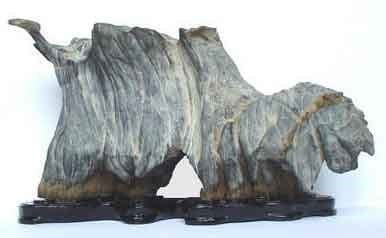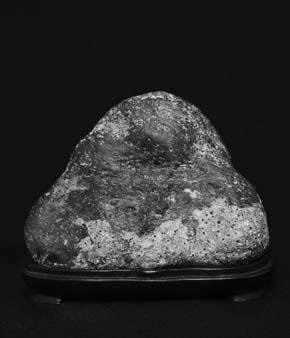The Japanese Art of Stone Appreciation is a reconnaissance into the artistry of suiseki – meager, unrefined shaped stones chosen for their equilibrium, serenity, figure, and directness.
Emanating from China, named “Gongshi”, and Korea named as “Suseok”, the artistry of Suiseki was popularized in Japan through the court of Chinese Imperial during the time of Asuka (538-710 AD). It developed into more distinguished while in the period of Kamakura (1183-1333 AD) while it earned approval with the ruling class of Samurai. Stone appreciation was brought in from the West when exhibited at prior demonstrations of bonsai.
The artistry of Suiseki involves an intricate classification system and the most alluring exemplar are displayed in coordinated competitions and museums.
History
People have been captivated by stones in all respects to history. Stones were assembled and have acted for various objectives – from functional to ornamental. Their strength and surviving aptitudes are linked with lastingness and eternity and have bewitched us since remote ages.
A Japanese word for alluring and essential stones, a lot of customary Suiseki is most of the time a few inches in length.
Formed by rain, wind, and the demising of time, these wonderful natures of the world recommend figures and compositions which prompt us of daily unrefined objects. If exhibited on particularly fashioned wood stands known as trays or “daizas” named as “dobans” or “suibans“, they develop into a genuine work of artistry and a divine revelation to the spectator.
Stones are embraced by Far Eastern countries being art elements – with various protocols and names like Aiseki (Japanese) – means appreciated stones; Ya Sek (Chinese) – means admirable dignified stones; Shang Sek (Chinese) – means amusing stone; Shang Shi (Chinese) – means dignified stone; Suseok (Korean) – means stone of endurance.
Traditionally, suiseki stones are exhibited on attractive wooden stands, named daizas, which are patterned and sculpted particularly for every stone by skilled woodworkers.
The stones may also be exhibited on trivial metal trays, often built with bronze, which is occupied with water, sand, or both. The stones may not be modified unless for sanitation and at times smoothened on the other side for exhibit and cohesion purposes.

Image Source: Pinterest
What is Suiseki?
What do you know about suiseki? You may start by learning about its origin.
Suiseki, the sensitive and contemporary art of Japanese, depicts much more about art – it also depicts a method, a sensation, connectivity between the viewer and the object.
Suiseki are kinds of stones which recommend waterfalls, mountains, lakes, and other unrefined scenery or which are philosophically alluring in structure and figure.
Suiseki comes in little size, commonly structured stones adored for their charm and for their influence to recommend scenery from nature or an element that is nearly linked to nature. Some of the most common kinds of suiseki are those which recommend a faraway mountain, a thatched hut, an island, an animal, or a waterfall.
Gathered from the wild, in streambeds, and on mountains, and then exhibited in their unrefined condition, these kinds of stones are elements of impressive charm. Further, they are modern tools for the essential impression which agitate in everyone who sees them an appreciation because of the astonishing influence of the world.
Elaborated in a straightforward manner, the suiseki is the understanding and gratitude of nature through a stone, leading from nature.
Suiseki is the learning and gratification of unrefined figured stones as elements of charm. The artistry of suiseki draws in the assembly, preparation and recognition of unmodified unrefined figured stones.

Image Source: Wikipedia
Aesthetics of Suiseki
For years, unforgettably alluring stones have captured the artistry of assemblers with their competence to recommend a display or object. The evocative probabilities of suiseki are nearly boundless, a lot similar to watching at a cloud and watching angels or running stallions, pictures absolute with vision.
In the world of suiseki, most of the time needed is the word “wabi-sabi”, attributing to the profound spiritual comprehending with a suiseki stone.

Image Source: Suiseki
Aesthetic Attributes:
- Balance
- Controlled color
- Voluptuousness
- Yugen (the abrupt approach of the subtle)
- Wabi (inbound, spiritual)
- Shibui (discreet elegance)
- Sabi (principles of art)
Classification of Suiseki
- Object stones (Keisho-seki) – illustrating an individual, bridge, house, boat, or animal.
- Weather (Tenko-seki) – looking like rain, extreme sunlight, snow or lightning.
- Landscape Suiseki (Sansui keijo-seki) – in the structure of a mountain, waterfall, island, shore – or coastline, plateau, cave, or canyon.
- Plant (Kigata-ishi) – with figures imaging flowers, forests, grasses, fruits, or bonsai.
- Celestial (Gensho-seki) – with figures alike to starts, sun, or moon.
- Abstract (Chusho-seki) – with facades alike to animal prints, knotted nets, etc.
Collecting Suiseki
Viewing stones may be collected from almost any places: mountains, shorelines, valleys, river beds, fields, and more. Some of the superior stones may be seen through these unrefined situations:
- Extreme winds
- Where erosion is mostly intensive
- Banks and in the water of rapid-gripping mountain creeks
- Rooted ravines
- Repeatedly blowing sand
- Middle portions of rapid-gripping mountain creeks
- Forceful water torrents
Nowadays, the art of viewing stones is expanding as collectors establish more classifications for the new stones that they collect, commonly pursuing a lot of the key benchmark for Japanese suiseki. Suchlike the condition with the astounding “desert stones” seen by Melba Tucker and the rest, and the astounding “murphys stones” seen in Northern California. As the popularity of this viewing stone keeps on expanding, so will the classification built and with it, the growing appreciation of this alluring art kind.


